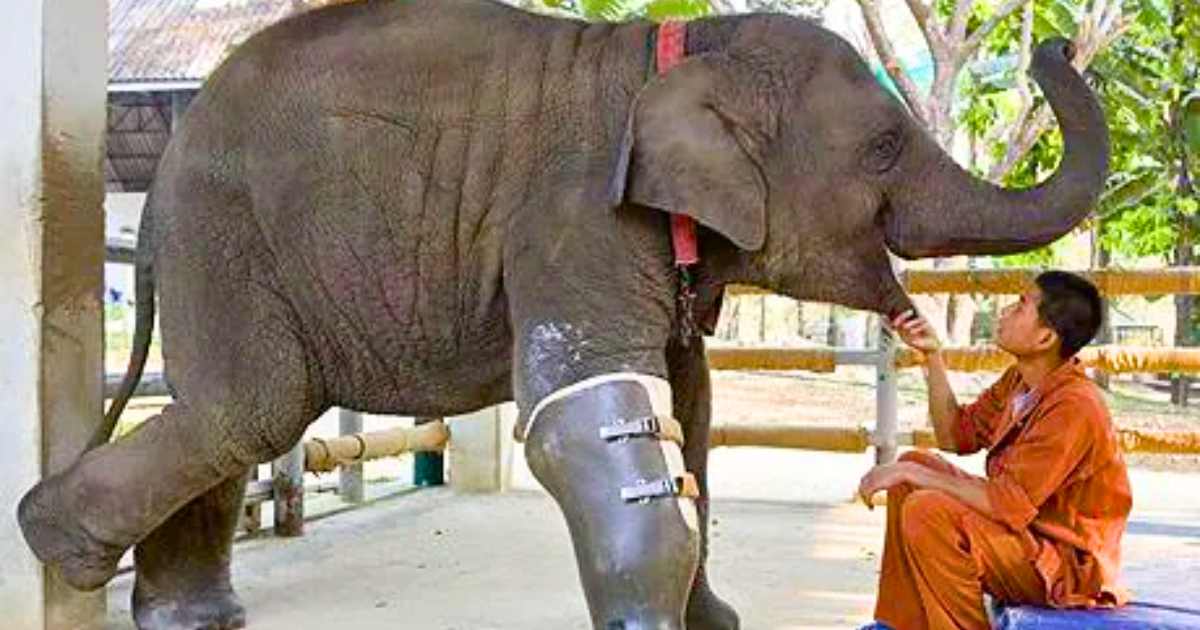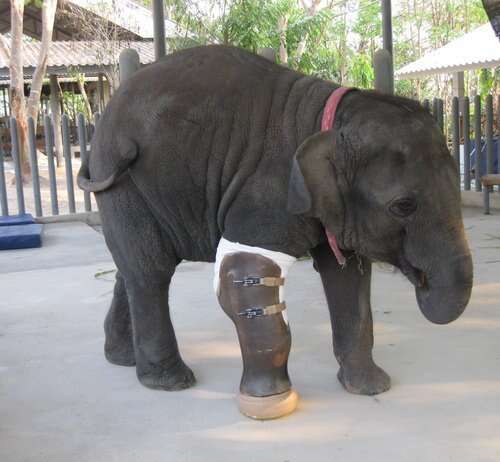When Mosha was just seven months old, her world changed forever. Near the Thailand–Myanmar border, she stepped on a landmine hidden beneath the soil. The explosion tore through her small body, leaving her without her right foreleg.

For most elephants, such an injury would have been a death sentence. Without the ability to walk and forage, survival would have been impossible. But Mosha was not left to die. Rescuers brought her to the Friends of the Asian Elephant Hospital, the world’s first dedicated elephant hospital. It became her sanctuary, her second chance at life.
A First in the World
In 2008, a new chapter began. A Thai surgeon named Dr. Therdchai Jivacate, known for his work in human amputations, believed Mosha could be saved with prosthetics. “When she cannot walk, she is going to die,” he explained. His conviction changed everything.
Mosha became the first elephant in the world to be fitted with a prosthetic leg. It was not easy—an elephant’s weight is immense, and her body was still growing. But when the artificial limb was secured, Mosha took her first tentative steps. Each step was more than movement; it was defiance against despair.

A Growing Giant
Like a hermit crab outgrowing its shell, Mosha has needed new legs as she’s grown. Asian elephants can consume up to 330 pounds of vegetation a day, and Mosha’s weight has steadily climbed since her rescue. Each few years, engineers and veterinarians return to design stronger, larger, more sophisticated legs for her.
Each upgrade is more than metal and padding—it’s freedom. With her prosthetic, Mosha can stand tall, roam her sanctuary, and live as an elephant should.
A Symbol of Hope

Mosha’s story has traveled far beyond the Thai jungle. She is not only a patient but also a symbol—a living reminder of the resilience of nature and the compassion of humans who choose to help. Her life has inspired innovations in veterinary medicine, paving the way for prosthetics to be used with other animals in need, from dogs to even llamas.
Visitors to the elephant hospital often stop at Mosha’s enclosure. They don’t just see an elephant with a prosthetic leg. They see survival. They see technology and empathy working together. They see hope.

Walking Toward Tomorrow
Today, Mosha is thriving. She continues to receive care, continues to adapt, and continues to walk—something that once seemed impossible. Each new leg she receives is a milestone, a testament to her endurance and to the people who refused to give up on her.
Mosha reminds us of something universal: life is fragile, but with compassion, creativity, and courage, even the deepest wounds can be healed.
She is not just an elephant who survived a landmine.
She is Mosha—the elephant who walks again.


